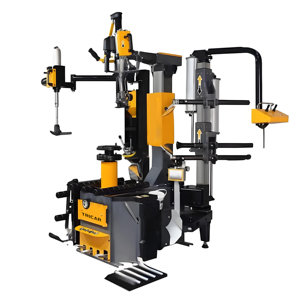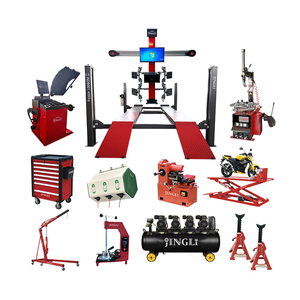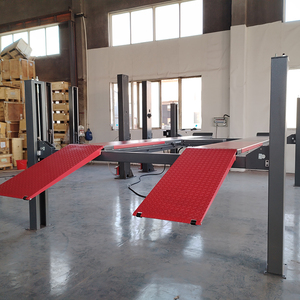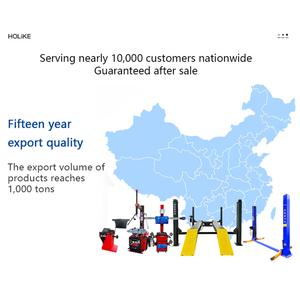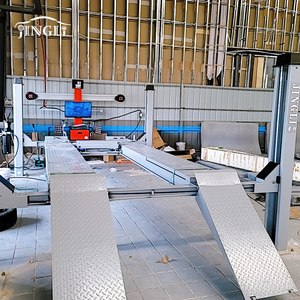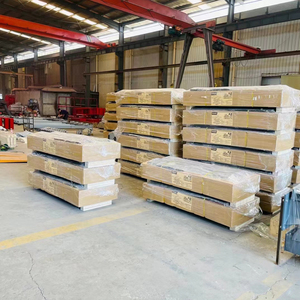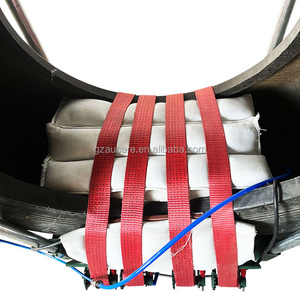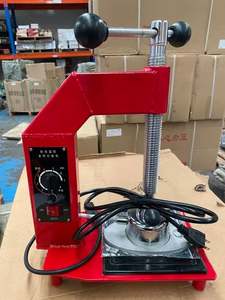Types of Tyre Vulcanizer Machines
A tyre vulcanizer machine is an essential tool for the repair and maintenance of tires. It hardens rubber by applying heat and pressure to bond rubber particles together, creating durable repairs. Understanding the different types can help you select the right machine for your specific needs.
Manual Tyre Vulcanizer
The manual tire vulcanizer features hand-operated controls and a heating plate that applies controlled heat and pressure. Its key advantages include:
- Portable and lightweight design
- No electricity required for operation
- Ideal for remote areas and field operations
- Simple mechanical components for easier maintenance
Best for: Small workshops, mobile technicians, and remote locations
Electric Tyre Vulcanizer
Electric vulcanizers utilize electrically powered heating elements for precise temperature control and consistent heat distribution. Their benefits include:
- Digital temperature controls for precision
- Consistent and reliable heat application
- Faster warm-up times than manual models
- Often include timers for automated operation
Best for: Workshops, garages, and tire service centers
Hydraulic Tyre Vulcanizer
Hydraulic systems leverage hydraulic power to apply high, consistent pressure during the vulcanization process. These professional-grade machines offer:
- Superior pressure application capabilities
- Faster curing times for efficient repairs
- Higher quality bonding for premium repairs
- Ability to handle larger and thicker tires
Best for: Commercial operations with high volume requirements
Portable Tyre Vulcanizer
Characterized by their compact and lightweight design, portable vulcanizers provide flexibility for on-the-go repairs:
- Easy transport between work locations
- Ideal for roadside assistance and emergency repairs
- Often battery-powered or with low energy requirements
- Quick setup for time-sensitive repairs
Best for: Mobile tire services and emergency repair situations
Gas-Operated Tyre Vulcanizer
Using propane or other gas fuels, these vulcanizers provide heating capabilities in environments without reliable electricity:
- Independence from electrical power sources
- High heat generation capabilities
- Suitable for use in potentially hazardous environments
- Often more portable than electric models of similar capacity
Best for: Remote operations and areas with unreliable electricity
| Vulcanizer Type | Power Source | Portability | Pressure Application | Best Application |
|---|---|---|---|---|
| Manual | None/Hand-operated | High | Manual/Moderate | Field repairs, remote areas |
| Electric | Electricity | Medium | Manual/Automated | Workshops, service centers |
| Hydraulic | Electricity/Hydraulic | Low | Hydraulic/High | Commercial operations |
| Portable | Various | Very High | Manual/Low-Medium | Mobile services, emergencies |
| Gas-Operated | Propane/Natural Gas | Medium-High | Manual/Medium | Areas with limited electricity |
Expert Tip: When selecting a vulcanizer type, consider not only your current repair needs but also potential future requirements. Investing in a slightly more versatile machine can save money in the long run by eliminating the need for additional equipment purchases.
Specifications & Maintenance of Tyre Vulcanizer Machines
Understanding the key specifications and proper maintenance procedures for tyre vulcanizer machines is crucial for optimal performance and longevity. These machines represent a significant investment for any tire repair operation, so knowing their technical aspects and care requirements is essential.
Key Specifications
Heating Plate Size
The heating plate dimensions determine the repair area coverage. Common sizes range from 100mm × 150mm for small repairs to 300mm × 600mm for truck tires. Larger plates can accommodate bigger damage areas but require more power to heat uniformly.
Temperature Control
Temperature control systems vary from basic analog dials to sophisticated digital interfaces with precise temperature settings. Advanced models offer programmable temperature profiles, maintaining optimal heat between 130°C-160°C for most vulcanization processes.
Pressing Force
Vulcanizers generate pressing force from 0.6MPa to 1.5MPa depending on the model and design. Hydraulic systems typically provide the highest and most consistent pressure, which is critical for proper rubber bonding during the vulcanization process.
Voltage and Power
Power requirements range from 1100W to 2200W for standard models, with larger commercial units requiring up to 3500W. Most operate on standard 220V-240V power, though some workshop models may require 380V three-phase power supplies for optimal performance.
Portability
Portable vulcanizers typically weigh between 10-25kg, while stationary models can weigh 50-200kg depending on their capacity. Portable units sacrifice some functionality for mobility, offering compact footprints around 500mm × 300mm × 200mm for easy transportation.
Material and Durability
Premium vulcanizers feature aluminum heating plates for efficient heat transfer and steel frames for structural integrity. High-quality models incorporate heat-resistant insulation, precision thermostats, and marine-grade wiring for harsh environment operation.
Maintenance Requirements
Proper maintenance extends the service life of your vulcanizer machine and ensures consistent repair quality. Implementing a regular maintenance schedule prevents unexpected breakdowns and maintains operational efficiency.
Visual inspection and surface cleaning of heating plates
Check electrical connections and pressure system integrity
Deep cleaning and lubrication of moving components
Comprehensive inspection and calibration check
| Maintenance Task | Frequency | Importance | Details |
|---|---|---|---|
| Regular Cleaning | After each use/Weekly | Critical | Disconnect power, clean exterior with soft cloth, remove debris from heating plate, check for residue buildup |
| Inspection of Worn Parts | Monthly | High | Check heating elements, pressure plates, electrical connections, replace any damaged components immediately |
| Heating Element Maintenance | Quarterly | Critical | Inspect for wear, damage, uneven heating; test temperature accuracy; replace if inconsistent |
| Lubrication | Monthly | Medium | Apply appropriate lubricant to hinges, handles, pressure mechanisms to reduce friction and wear |
| Electrical & Safety Checks | Quarterly | Critical | Inspect all electrical components, test safety features, verify proper grounding, check for loose connections |
Safety Warning: Always disconnect the vulcanizer from power sources before performing any maintenance. Allow the machine to cool completely before cleaning or servicing to prevent burns or other injuries.
How to Choose a Tyre Vulcanizer Machine
Selecting the right tyre vulcanizer requires careful consideration of several factors to ensure it meets your specific needs and provides reliable performance. The following comprehensive selection guide will help you make an informed decision.
Tyre Size and Type Considerations
Different vulcanizers are designed for specific tyre applications:
- For passenger vehicles, a standard vulcanizer with 150-200mm heating plates is usually sufficient
- Commercial truck tyres require larger machines with 250-350mm plates and higher pressure capabilities
- Specialty tyres (agricultural, industrial) need dedicated vulcanizers with appropriate configurations
- Consider the range of tyre sizes you'll regularly repair to avoid limitations
Key point: Match the vulcanizer's capabilities to your most common tyre repair scenarios
Portability Requirements
Your work environment dictates portability needs:
- Fixed workshop operations benefit from larger, more powerful stationary machines
- Mobile repair services require lightweight, compact units under 25kg
- Consider power source availability at repair locations
- Some portable models sacrifice durability and feature sets for mobility
Key point: Balance mobility requirements against performance capabilities
Heating Method Selection
Different heating technologies offer varying benefits:
- Electric heating provides precise temperature control and convenience
- Steam-based systems offer higher temperatures for specialized repairs
- Gas-powered options work in locations without reliable electricity
- Consider warm-up time requirements for your repair volumes
Key point: Match heating technology to your operational environment
Pressure and Compression Capabilities
Proper pressure application is critical for quality repairs:
- Hydraulic systems provide the most consistent, high-pressure application
- Manual systems require operator skill but offer simplicity
- Look for adjustable pressure settings for different repair types
- Consider pressure distribution technology for even application
Key point: Higher pressure capabilities generally result in stronger repairs
| Selection Factor | Importance Level | What to Look For |
|---|---|---|
| Ease of Use | High | Intuitive controls, clear displays, quick setup, comprehensive manuals, accessible maintenance points |
| Quality and Durability | Critical | Robust construction, quality materials, reputation of manufacturer, warranty coverage, positive user reviews |
| Safety Features | Critical | Temperature limiters, pressure relief valves, emergency stops, proper insulation, heat shields, certification compliance |
| Cost vs. Value | Medium | Total cost of ownership, expected lifespan, repair volume capabilities, included accessories, maintenance costs |
| Power Requirements | High | Compatible voltage/amperage, power efficiency, startup surge requirements, generator compatibility if needed |
Professional Recommendation: For busy repair shops handling diverse tyre types, consider investing in a mid-range electric vulcanizer with hydraulic pressure application. This combination provides the versatility to handle most common repairs while offering the precision needed for quality work. If budget allows, having both a stationary workshop unit and a portable unit for roadside assistance provides maximum operational flexibility.
DIY Repair and Replacement of Tyre Vulcanizer Machines
When your tyre vulcanizer shows signs of malfunction, you may not need to immediately purchase a replacement. Many common issues can be resolved through proper troubleshooting and repair. Follow this systematic approach to diagnose and fix problems with your vulcanizer.
Systematic Repair Process
-
Assess Repair Feasibility
Before proceeding with repairs, evaluate whether the machine is truly beyond repair. Check for obvious damage like broken frames, severely damaged heating elements, or burnt electrical components. If the damage is limited to specific parts rather than comprehensive failure, repairs are often viable.
-
Gather Tools and Materials
Assemble the necessary tools and replacement parts for your repair. Common tools include screwdrivers, wrenches, multimeter, wire cutters/strippers, heat-resistant tape, and replacement components specific to your vulcanizer model. Having everything prepared before disassembly prevents lost parts and streamlines the process.
-
Consult Technical Documentation
Thoroughly review the manufacturer's manual to understand component locations, disassembly procedures, and technical specifications. Pay special attention to safety warnings and recommended maintenance procedures. If the original manual is unavailable, search online for your specific model documentation.
-
Disassemble with Care
Carefully disassemble only the sections necessary to access damaged components. Take photos at each step to document the original configuration for reassembly. Keep small parts organized in labeled containers to prevent confusion. Maintain awareness of electrical connections and their routing.
-
Clean Components Thoroughly
Once disassembled, clean all accessible parts to remove built-up debris, rubber residue, and corrosion. Use appropriate cleaning agents that won't damage components - mild detergent for most parts, electrical contact cleaner for circuit boards and connections. Ensure parts are completely dry before reassembly.
-
Repair or Replace Damaged Parts
Replace irreparable components with exact or compatible replacements. For heating elements, match both physical dimensions and electrical specifications. When repairing wiring, use proper gauge wire and heat-resistant insulation. Secure connections with appropriate fasteners or adhesives rated for high-temperature applications.
-
Test Before Final Assembly
Before complete reassembly, perform basic functional tests to verify repairs. Check electrical continuity, test heating elements at low power, and verify mechanical operations. This intermediate testing prevents having to disassemble again if issues persist.
-
Reassemble Carefully
Following your documentation and photos, reassemble the vulcanizer in the reverse order of disassembly. Ensure all fasteners are properly tightened, electrical connections are secure, and safety features are correctly reinstalled. Pay special attention to heat shields and insulation placement.
-
Conduct Final Testing
After complete reassembly, perform comprehensive testing under normal operating conditions. Monitor temperature stability, pressure application, and all control functions. Start with short operational periods, gradually increasing to normal duty cycles while monitoring for abnormalities.
-
Implement Proper Storage
After successful repair, store the vulcanizer in a clean, dry environment away from direct sunlight and extreme temperatures. Cover the machine when not in use to prevent dust accumulation. Periodically operate the machine briefly during extended storage periods to prevent component seizure.
Important Safety Warning: When repairing electrical components, always disconnect the vulcanizer from power sources and verify no stored electrical charge remains. For machines with electric heating elements, be particularly cautious of potential shock hazards. If you experience electrical shocks or are uncomfortable working with electrical systems, consult a qualified technician immediately.
Expert Maintenance Advice: Develop a preventive maintenance schedule to identify and address minor issues before they require major repairs. Regular inspection of heating elements, pressure systems, and electrical connections can significantly extend your vulcanizer's service life and reduce repair frequency.
Frequently Asked Questions
The optimal service frequency depends on usage intensity. For heavily used vulcanizers in commercial settings, perform comprehensive servicing every 3-6 months. For occasional use in small workshops, annual servicing is typically sufficient. However, all machines should receive basic maintenance (cleaning, inspection) after every 30-50 operating hours, regardless of the timeframe. Regular preventive maintenance significantly extends equipment lifespan and ensures consistent repair quality.
While vulcanizers are versatile, they're not suitable for all tire repairs. They excel at fixing:
- Punctures up to 6mm in diameter on the tread surface
- Small cuts less than 10mm in length on the tread
- Surface damage that hasn't compromised the tire's structural integrity
- Sidewall damage, which compromises the tire's structural integrity
- Extensive tread separation or belt damage
- Tires with previous multiple repairs in close proximity
- Tires with excessive wear (below 1.6mm tread depth)
Tyre vulcanizers can be operated safely when proper procedures are followed, but they do present potential hazards:
- Heating plates can reach temperatures of 150°C (300°F) or higher, posing burn risks
- Hydraulic systems operate under high pressure that can cause injury if components fail
- Electrical components present shock hazards if improperly maintained
- Moving parts can create pinch points during operation
- Always wear appropriate personal protective equipment (heat-resistant gloves, safety glasses)
- Follow manufacturer's operating procedures precisely
- Maintain all safety features in proper working condition
- Train all operators thoroughly before allowing unsupervised use
- Keep the work area clear of flammable materials
A properly executed vulcanized repair can last for the remaining service life of the tire under normal conditions. Factors affecting repair longevity include:
- Quality of the vulcanizing materials used (patches, fillers, cement)
- Proper application of correct temperature and pressure during vulcanization
- Thoroughness of pre-repair preparation (cleaning, buffing)
- Overall condition and age of the tire being repaired
- Driving conditions and maintenance after repair
- Use high-quality repair materials designed for vulcanization
- Follow manufacturer-recommended cure times precisely
- Ensure the vulcanizer maintains consistent temperature throughout the process
- Monitor tire pressure regularly after repair
Yes, minor punctures and cuts are ideal candidates for vulcanization repair. The vulcanization process creates molecular bonds between the repair materials and the original tire rubber, resulting in a permanent, seamless repair when properly executed. For optimal results with minor damage:
- Clean the damaged area thoroughly to remove all contaminants
- Create proper surface texture through buffing to ensure optimal material bonding
- Apply appropriate chemical activators to enhance the chemical bond
- Use the correct patch size (extending at least 1/2 inch beyond damage in all directions)
- Maintain proper vulcanization temperature (typically 135-150°C) for the full recommended cure time




